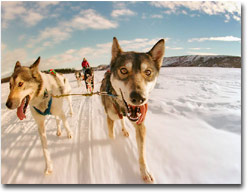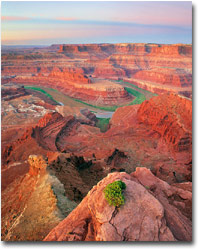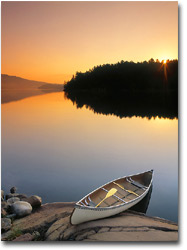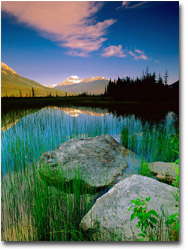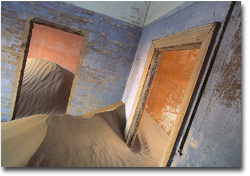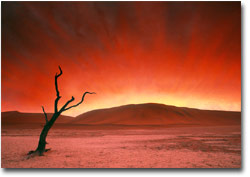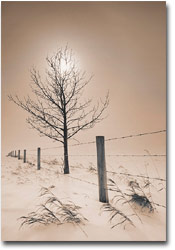|
|
 How to Use Wide Angle Lenses Effectively
Text and photography Copyright Darwin Wiggett If you could only choose one focal length of lens for the rest of your photographic endeavors, what would it be? For me, the answer is simple. I love wide-angle lenses, and my favorite lens is a 20mm. I see the world as a big vista, a meeting of earth and sky and everything in between. I have trouble seeing things in isolated patches, it is a big world and I want to capture it all. That’s the trouble with wide-angle lenses: photography is about deconstruction, about eliminating unwanted elements and simplifying the composition to just a few key ingredients. A wide-angle lens is like a kid curious about everything in the world but unable to concentrate well on just one chore. Wide-angle lenses are the hardest lenses to use effectively because we constantly need to wrestle with its inherent “I want it all” attitude. Get close… and then get closer
Most folks think a wide-angle lens should just be used to capture big scenes that normal lenses can't take in. In part this is true, wide-angle lenses do have large angles of view, and they do capture large chunks of property. The problem is that to fit all that real estate onto a piece of film or digital sensor requires that individual details are very small, so small that they often go un-noticed in the final image. The key to successful use of wide-angle lenses is to get close to your subject… the closer the better. The closer you get, the bigger the subject will be in the frame and the more impact the photo will have. For example, in Photo 1, I used a 15mm fisheye lens to photograph Anita running a team of sled dogs in the Yukon. I wanted the dogs to be the photographic center of attention in the photo. A fisheye takes in 180-degree angle of view, a really wide view! Even at 2 or 3 feet away the dogs become tiny specs in the big scene. I needed to get really close, and then get even closer. To achieve this I lay between the musher’s legs on a sled in front of Anita’s team and enticed the dogs close to the lens with some ‘kibble’ (moose-meat) taped to the camera hotshoe. In this shot the closest dog is about 8 inches away from the front of the lens (its breath actually was fogging the lens)! Every time we hit a bump my head slammed into the crotch of the driver. Needless to say, I only got a few frames before the driver decided my unique angle wasn’t worth his agony. “Great” you say, “but I shoot scenics not animals”. “Right now I am on the lip of the Grand Canyon, if I get any closer to my subject I will be dust on the canyon floor!” True… but still, the same rule applies. Use your wide angle as most folks do and you’ll get a photo of a big hole (the canyon) with very little detail for the eye to rest on. For a more successful shot you need something close (on the canyon lip) to use as a foreground to provide an ’anchor’ to your image; something that gives a sense of scale to the scene (a tree, a flower, a rock, or a person). By using something that most folks know the ‘true’ size of, you can use the near-far exaggeration of perspective to successfully create an illusion of distance. Objects close to us are big in our experience as humans; objects far away are small. To increase the apparent size of the Grand Canyon, just get close to a cluster of flowers on the Canyon lip, make ’em fill the frame, and the Canyon will look even more distance and deep by comparison. It is important in grand landscape photography to always have a strong foreground to help you establish an understandable spatial relationship between foreground and background (see Photos 2 and 3) Get focused but stay hyper (hyper-focused that is) Generally, you will nearly always want to get the most depth of focus you can from your wide-angle lens. You will most often want the image sharp from the foreground all the way to the background. Fortunately wide-angle lenses have the capability of giving you acceptable focus from one or two feet, all the way to infinity. “Hey, wait a minute, I can focus on the flowers, or the middle distance or the far background, but my camera doesn’t let me focus on all three at once!” Not true, when you look through your lens, you are looking at the depth-of-field at the widest aperture setting. This is what you would get if you set your lens at f2.8 (or whatever the smallest number on your lens is). But if you shoot at f11, f16, or f22 you will get a much different look (more of the scene in focus). To get the absolute most depth-of-field (apparent sharpness) across the frame, you need to know where to focus your lens. To do this, you need to calculate hyperfocal distance for each lens at each aperture you plan to use. Unless you have a degree in Quantum Physics, I suggest you get some help with this. I used a nice software solution from ProFotoSoftware called the Hyper Focal Calculator. For my 20mm lens, if I set the aperture to f22 and focused my lens at an object 2 feet away, everything from 1 foot away to infinity would be in focus. So whenever I use my 20mm lens I know that as long as I don’t get closer than one foot away from anything, I can keep everything in my frame in focus if I set the camera to f22 and focus the lens at two feet away (use manual focus for this). Now I just gotta search for great foregrounds! Compose with the whole frame in mind Once you have great foreground, you have to make sure that all the elements from the foreground, middle distance, and background all work well together as a composition. Even though you have a big scene compressed in your viewfinder, you still need to organize all the elements in the scene into a strong composition. Most folks can easily do this with telephoto lenses because telephotos isolate and reduce the number of elements in a photo. The struggle with wide-angle lenses is to organize the chaos that fills the frame into some sort of cohesive graphic design. For example in Photo 4, I used the rocks, the line of mountain, the silhouetted trees, and the clouds in the sky to give an ‘s’ curve composition across the frame. I find that using a tripod and making small adjustments in camera placement can really make huge differences to the composition. Wide-angle lenses demand precision in camera placement to get the most graphically pleasing designs. In Photo 5, I spent a lot of time moving this way and that, trying different tilts of the camera, and angles of view before I hit upon a composition that worked in the tight quarters of this room from Kolmanskopp, Namibia, Control the spill of light across the image No matter what the lens you use, photography is all about light. Dramatic light will make or break a photo. With wide-angle lenses you often have a wide range of light falling across the image and, as such, the range of contrast in a wide-angle scene can be extreme. I often have to use tools such as fill flash, grad filters, polarizers, or multiple exposures to control the contrast in a scene (more on this in future articles). But for now, here is a quick tip on using filters with wide-angle lenses. Many folks use the Cokin P-series filter holders. Often on wide-angle lenses (especially wide angle zooms) the filter holder causes vignetting to occur. Some people have solved this problem by filing down one or two of the Cokin P-holder filter slots. Others just hold the filter by hand in front of the lens. There is a Cokin ‘retrofit’ adapter (P486) that attaches onto the lens in such a way that the Cokin holder is flush against the lens element allowing use of all three-filter slots. I use this on my Canon 20mm f2.8 and no longer get vignetting with the Cokin P-holder. (see Photo 6 – shot with a 2 ½ stop reverse grad and an A13 warming filter in a three slot Cokin P-holder on a 20mm lens). Choose the best wide-angle lens for your shooting style Lastly, I prefer fixed focal length wide-angle lenses to wide-angle zoom lenses for several reasons:
I love the look of wide-angle lenses, so much so that in my other life as a commercial stock photographer, I almost always shoot stills, kids, and animals with wide-angle lenses. Doing so makes me a part of the action, and I am forced to interact with the subject. Had I shot the sled dogs with a 300mm lens, I wouldn’t have come to know the dogs as well, feel their breath on my face, have moose blood drip on my forehead, or smack a musher in the ‘kahunnas’ with my head! Next project… fisheye lens portraits of wild bears. See ya around! Darwin Wiggett - NPN 343 Editor's Note - Natural Moments Photography is comprised of the husband and wife shooting team of Anita Dammer and Darwin Wiggett. Anita has 17 years experience as staff photographer for the Glenbow Museum in Calgary and is currently doing freelance stock photography. Darwin has been shooting stock since 1990, and has two books published by Whitecap in Vancouver ("Darwin Wiggett Photographs Canada" and "Seasons in the Rockies"). Currently Anita and Darwin are Editors-in-Chief of Canada's Photo Life magazine. In addition to their editing duties they specialize in landscape, nature, animal, humor and kid photography. Comments on NPN nature and wildlife photography articles? Send them to the editor. |
|
|
